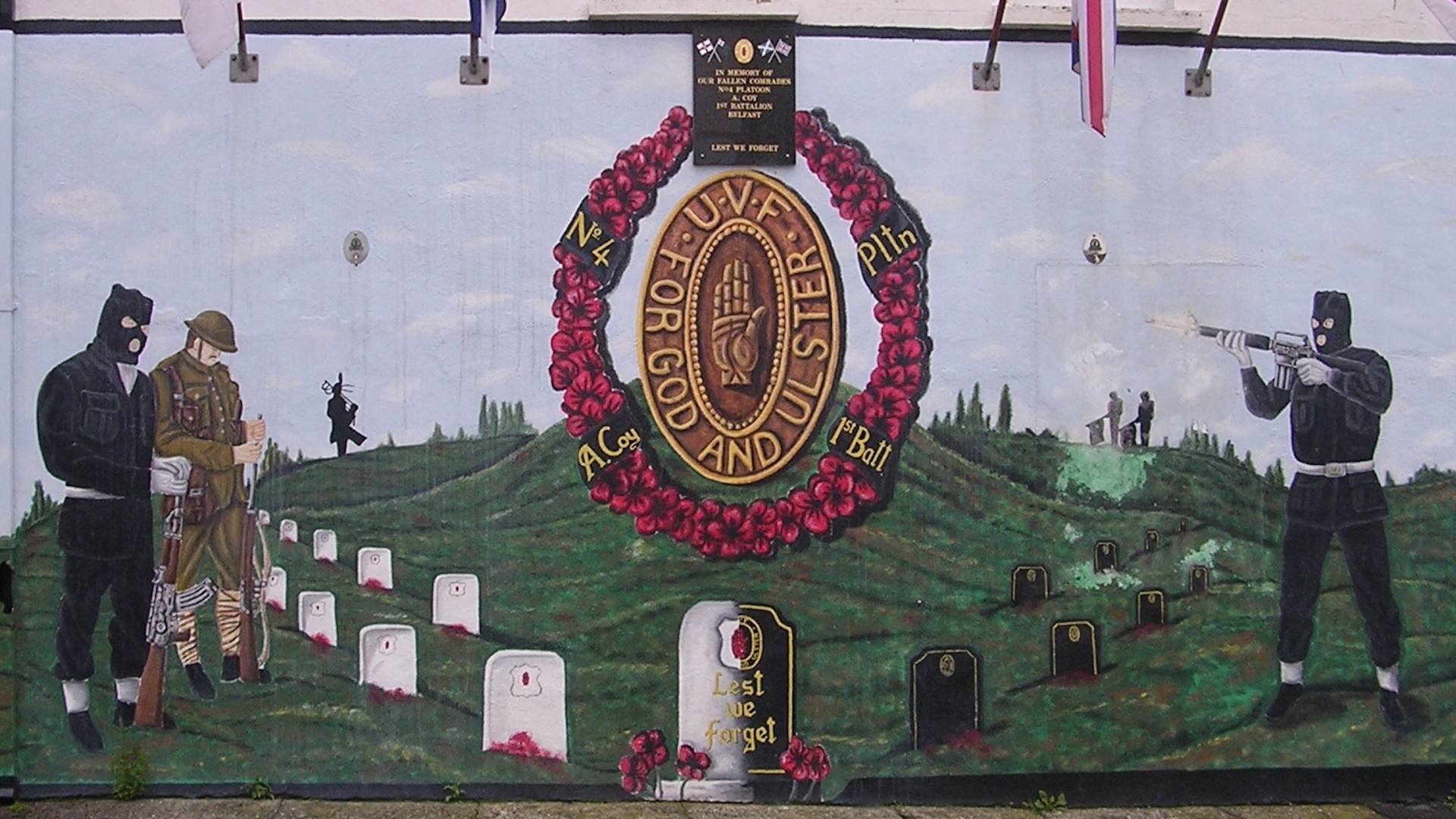Context behind BA History with Military History image
Primary page content

The image has been chosen to illustrate the way we approach military history at Goldsmiths because it is extremely nuanced and complicated.
At its core is the combination of paramilitaries (wearing black) from the era of the Northern Ireland ‘Troubles’ and a First World War British soldier in the foreground (plus a British Army piper in the background). In the centre is the badge of the Ulster Volunteer Force (UVF), surrounded by a wreath of poppies, the traditional symbol of war commemoration in the UK.
The UVF badge was first used in 1913 by the paramilitary group formed by the Ulster Unionist Council in opposition to Home Rule. It was a legal organisation, actively endorsed by the then leader of the Conservative and Unionist Party, and later Prime Minister, Andrew Bonar Law.
At the outbreak of war in 1914, its figurehead, Sir Edward Carson, successfully negotiated with the War Office for the UVF to be drafted en masse in the British Army, and it formed the 36th (Ulster) Division of the British Army, which served with gallantry on the Somme, at Messines, Passchendaele, and many other places.
However, when a new Ulster Volunteer Force was formed in 1966, although it had no formal link with the old UVF and rapidly became illegal, it used some of the trappings of the predecessor organisation. The two were completely different organisations but have become merged as one in the minds of many.
The mural was photographed in 2007 in the Shankill area of Belfast. It has now been replaced by a different piece (also UVF-related). Its central implication, aside from the overt point of commemorating the dead of the Troubles-era UVF, is that there is somehow a similarity between service in a paramilitary group and service in the British Army.
However, that is extremely problematic. While men did join the British Army from the UVF in 1914, none of those would have worn the modern-day, black paramilitary uniform. Moreover, although we know now that there was collusion between crown forces and loyalist paramilitaries during the Troubles, the UVF also found itself in conflict with security forces. Therefore, to equate service in the illegal Troubles-era UVF with service in the British Army is mistaken.
The fact that people do make that link is what makes the mural so complex and fascinating. It raises issues of service, identity, memory, and belonging, as well as the devastating effects of conflict and violence, and links between political causes and paramilitary groups. That is why we have chosen it as an image that communicates the way we approach military history at Goldsmiths.